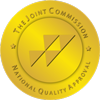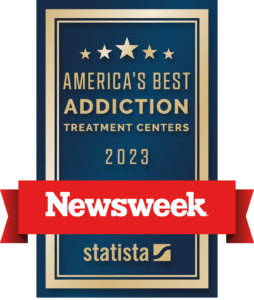How Much Does Drug Or Alcohol Rehab Cost?
What Are The Drug or Alcohol Rehab Treatment Options?
The service settings for rehab programs usually fall under the categories of residential/inpatient and outpatient treatment. And before checking rehab prices, it is important to understand your options to know where to begin
The differences between the two have to do with the needs of the person trying to quit. While a person might be tempted to choose based solely on price, they should follow the orders of a professional. Only they can say which of the options is the best for a person’s case.
Inpatient or residential treatment requires that an individual stays in the facility for treatment. They might get visitation days and family activities, depending on the center’s plan. But the isolation from external contact is meant to help them focus on their healing process. That is why it is mainly recommended for severe cases of addiction, especially in cases of overdosing or very acute symptoms.
Outpatient treatment, on the other hand, doesn’t demand a 24/7 stay for treatment. It allows the individual to stay home while getting treatment, and they only need to go to the center for sessions of treatment. Still, it is recommended for moderate to mild cases, as it requires self-control.
It can only work if they have a safe environment to go home to, with people supporting them, free from the temptation of relapse. Their withdrawal symptoms would have to be under control as well.
Besides rehab itself, there are other services required for rehabilitation that a person might need. For instance, before starting treatment, they must go through a detoxification process. This is officially the first step, and it might require medical attention and medication. Detox can be done either as an outpatient or inpatient detox.
After the treatment program is over, however, there is still more to do. Therapy, support group sessions, psychiatric follow-ups – recovery isn’t over once you finish the program. But they are necessary to avoid relapse in the most efficient way. Make sure to factor them in as well when doing your math.
Treatment Types: How Much Does Each Cost?
 The final sum of the treatment will depend on several factors. The prices change depending on the center you will pick and the service you will need. So, as you wonder how much does drug or alcohol rehab cost, you should first know what you’ll have to do.
The final sum of the treatment will depend on several factors. The prices change depending on the center you will pick and the service you will need. So, as you wonder how much does drug or alcohol rehab cost, you should first know what you’ll have to do.
Besides the center you pick, the time that it might take will affect the final amount, too. And that can be a bit hard to predict since each person has their own pace. But what you can do is get an average estimate and try to use that to compare prices between centers.
Detox
For detox, the price depends on the service setting you’re picking. Some inpatient programs include detox as part of the program, others don’t. The symptoms and level of care will also influence the final price – the more intense they are, the more attention they require. For outpatient detox, they usually range between $1,000 and $5,000. A 30-day detox program can cost from $250 to $800 a day, on average.
Inpatient Rehab
The programs can often be planned out in 30 to 90 days. For a 30-day program, prices can range from $6,000 to as much as $20,000, depending on the facilities, how popular they are, how specialized they are, etc. For longer programs, like 60-day or 90-day options, a person might pay from $12,000 to $60,000.
Outpatient Rehab
Although they tend to be longer than inpatient treatment, they are usually cheaper. But the price depends on the number of sessions and services the person needs. When it comes to 30-day programs, they might charge as low as $5000 and as high as $10,000 on average.
Intensive Outpatient Rehab (IOP)
In an outpatient service setting, this version of the program can be a bit more comprehensive, with fewer visits required. Therefore, the price can drop to about $3,000 for a 30-day program. Still, for those that need more sessions, the total sum might be the previous estimate for outpatient treatments, $10,000.
Partial Hospitalization (PHP)
This outpatient option is a bit more intense and highly recommended for more severe cases. Because they require more visits, for longer periods, they can be more expensive than other outpatient options. PHPs can cost an average amount of $350 to $450 a day, more or less.
Medically-Assisted Treatment
As expected, this would depend on the patient’s needs and the drug required. They tend to be used to help overcome and deal with alcoholism and/or opioid addiction. The final price will also depend on the number of visits required. According to different sources, methadone-assisted treatment can cost about $4,700-$6,500 a year.
Costs for treatment can often be the reason why some people don’t look for help. But what many don’t know is that there are many ways to make treatment more affordable.
 Will Insurance Cover Rehab?
Will Insurance Cover Rehab?
The good news is that rehab can be much more affordable through insurance coverage. Mental and behavioral services are considered essential benefits, and therefore must be covered by all insurers.
If you have insurance, you can get coverage for rehab, you just need to contact your insurer to find out how much does drug or alcohol rehab costs under your plan.
While all plans have to cover insurance, the coverage provided will vary depending on the plan you have. Some of them will only cover part of the treatment, or might only cover up to a certain amount of days. Again, the only way to know about any restrictions or specifics is by contacting your insurer.
Insurance alone can lower the final cost, but there’s more help than you can get. By applying for a plan, there are many benefits that you can apply for that require insurance.
One of them is The Affordable Care Act (ACA), also referred to as Obamacare. The ACA will not give you 100% coverage, however, and depends on your cost-sharing. To find out how much does drug or alcohol rehab cost with ACA, you’d have to check your plan. But it will make a significant cut to costs.
How Can I Pay For Drug or Alcohol Rehab Without Insurance?
If you do not have insurance, you still have other options to make rehab more affordable. Nonetheless, applying for an insurance plan might be more cost-effective in the long run. Some states might charges fees from those who don’t have an insurance plan. Not only that but not having it might make it harder to pay for treatment, even with additional help.
State-funded programs
Most states allow people to try to start a state-funded plan for people to get help without paying for it. However, they would have to be eligible for it.
To check eligibility, those seeking help would have to apply and provide information on income status. Additionally, they need to prove their addiction status and/or need for intervention.
This can be done through a mental health agency and/or substance abuse agency. You can find a directory here to find out who you can contact.
Rehab grants and/or scholarships
If you are not eligible for aid for a state-funded rehab program, you can get partial help. Government organizations and rehab facilities can also provide monthly scholarships and/or grants as well. This partial help can be enough for many to get the help they need.
Sliding scale treatments
This is a benefit that is only available at select centers. The fees for these program plans vary according to the person’s income, being adjusted based on them.
Payment plans
Many centers allow people to divide up the full price of treatment into partial payments. That way, the person can pay for it little by little as they receive treatment. The total amount to be paid per month and the number of payments would have to be negotiated.
Credit cards
Similar to a payment plan, paying treatment off with credit cards is a way to pay for it gradually. However, this might be a problem for people that don’t have good credit or a lot of money saved up. If you are in the red, the bank might charge a fee every month that you owe them money, adding extra costs.
Loans
A person can apply for a loan to pay for a treatment plan. They can get private loans, personal loans, or even use home equity in their favor. To avoid high-interest rates or extra fees, however, they’d need to be careful. It is important to pay it all off on time, or they might have additional costs.
Crowdfunding
This is an alternative that became quite popular for many thanks to social media. You can use any online platform available to get help from others. The effectiveness of crowdfunds depends on the outreach and how successful the online reach is. Even if you don’t reach the final goal of your campaign, it can help a lot.
Using Medicare and Medicaid For Rehab Insurance
Medicare and Medicaid, programs available since 1965, can also provide coverage for rehab. Because they are state- and federal-funded programs, they do go through changes for eligibility almost yearly. So if you benefit from them, you’d have to make sure of your coverage before using it for rehabilitation purposes. And if you have applied in the past and were not eligible, you might be now.
Even though they were created at the same time, they are different programs. And that also applies for eligibility – each one has its requirements. Some people might be able to benefit from both, even. This means that if you can’t benefit from one, you can still benefit from the other.
Medicaid was created to help those with low income since they might not afford to pay for insurance. There are no age- or health-related requirements. However, the maximum income one might have to be able to use Medicaid depends on the state they live in.
Medicare works differently, and being eligible for it has nothing to do with income. It was created to help people with severe disabilities and/or people over the age of 65 to get treatment.
Medicare requirements are as follows:
- Being over 65 years old and having paid Medicare taxes for 10 years or more
- Being married to someone who paid Medicare taxes for 10 years or more
- Having a severe disability (no age-related requirement)
- Suffering from end-stage Renal Disease.
The insurance for rehab under Medicare has a few limitations. Medicare is divided into four sections (A, B, C, and D), and all of them mention these limitations related to rehabilitation services. Things like the number of days covered and types of drugs are specified. It is important to read and research on each of them before starting treatment, to avoid any surprises.
Getting Help At Sana Lake Recovery Center
Yes, paying for rehab might be difficult for many, but there are ways to overcome that challenge. Many people do not get the help they need because they cannot afford it.
That’s why we at Sana Lake Recovery Center believe that people deserve to get the help they need, no matter the cost. With that in mind, we have teamed up with different insurers to help people be able to pay for treatment plans with us.
The final price will depend on the services required, and we can give you all the information for your treatment specifically. Our team can answer any of your questions and help you learn about our options and what to ask your insurer.
If you want to know how much does drug or alcohol rehab costs at our facilities, visit our website and contact us today. Explore your choices and don’t let the fear of not affording treatment stop you from getting the help you deserve.



